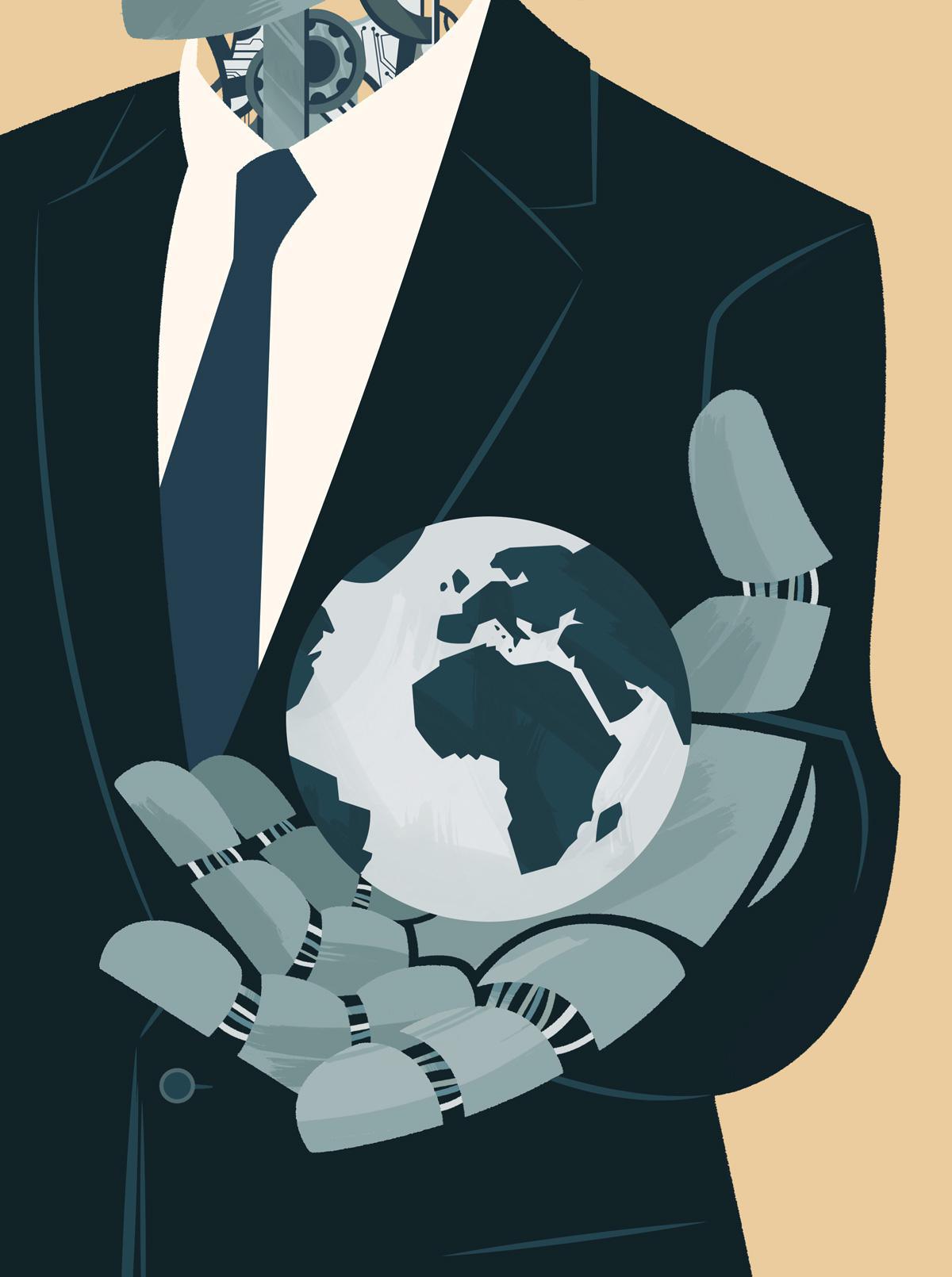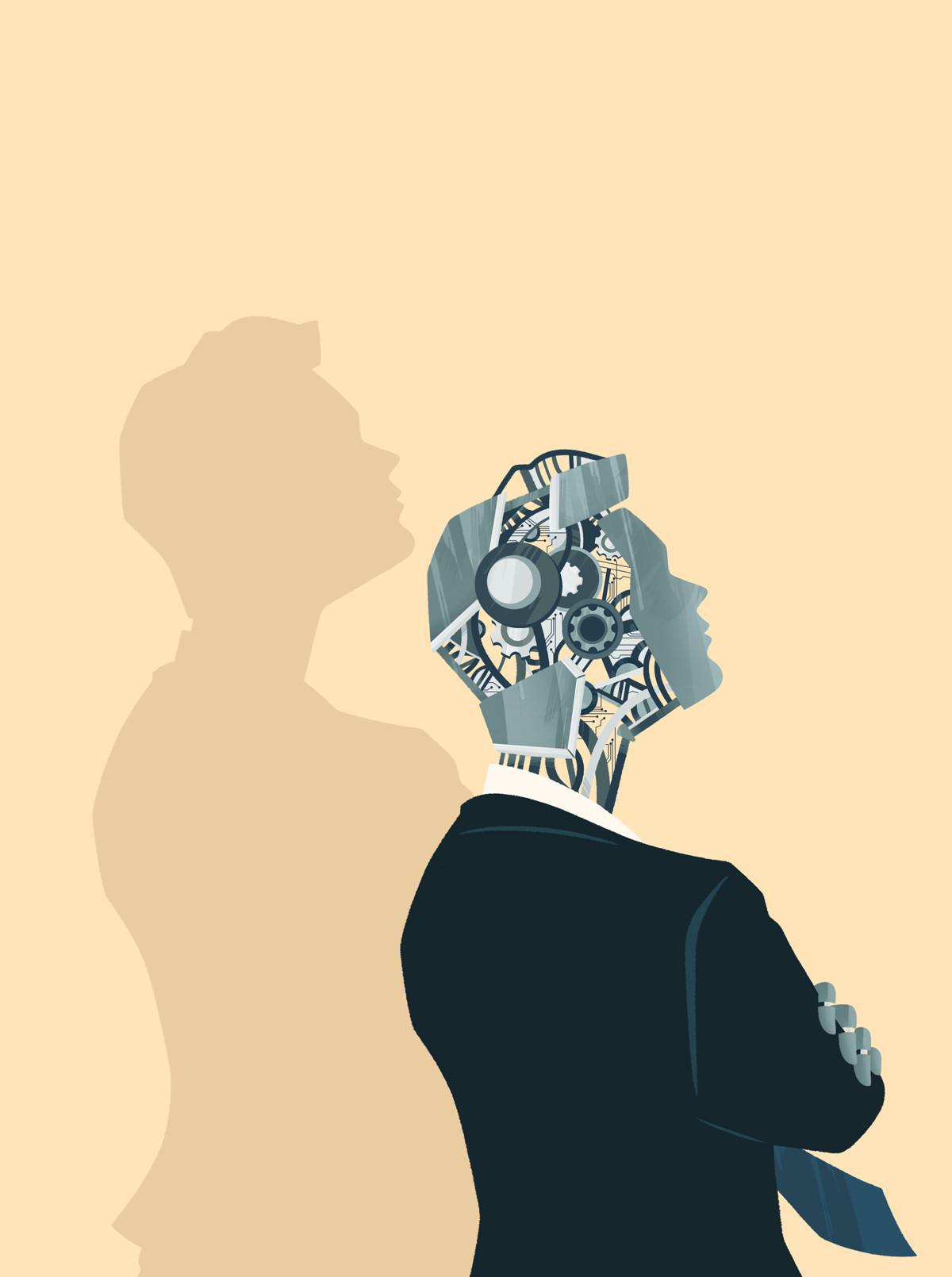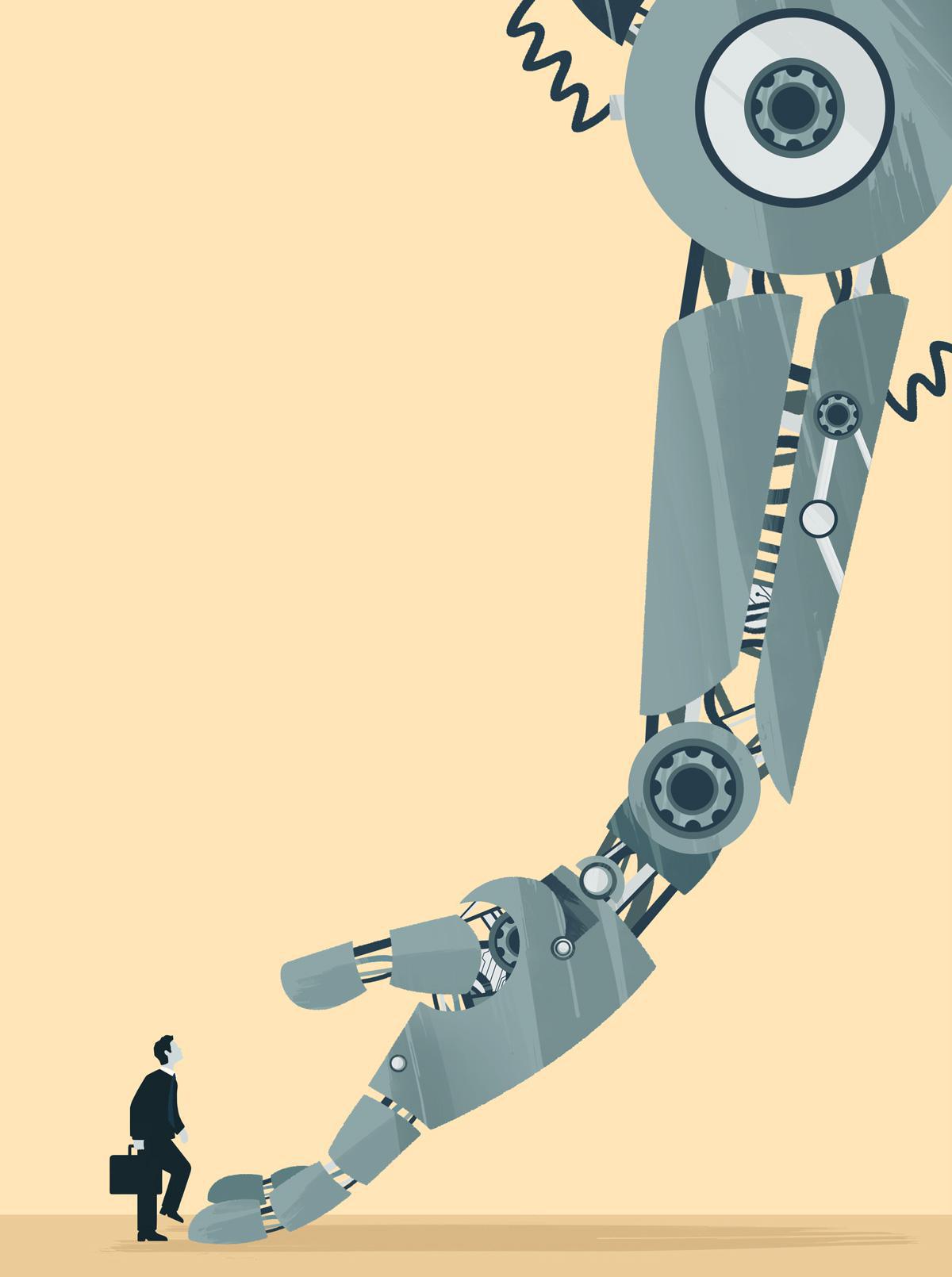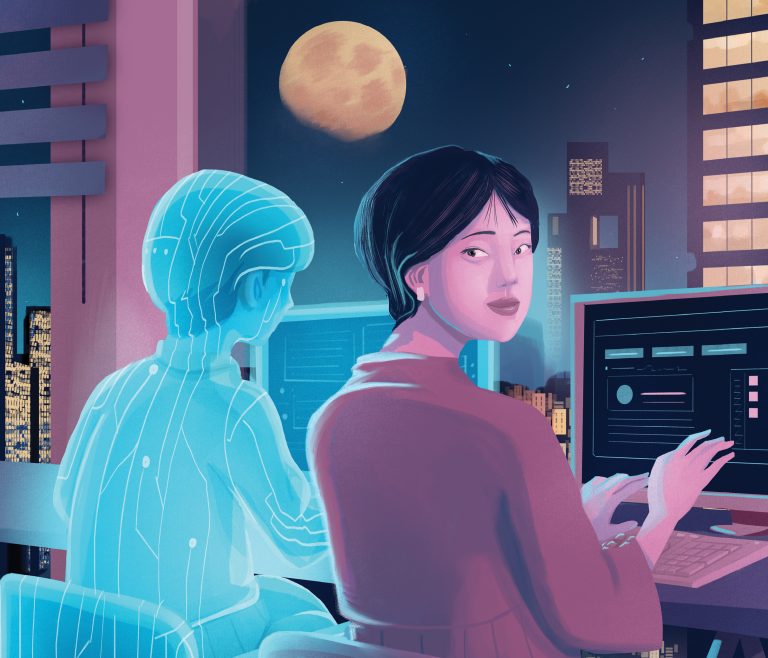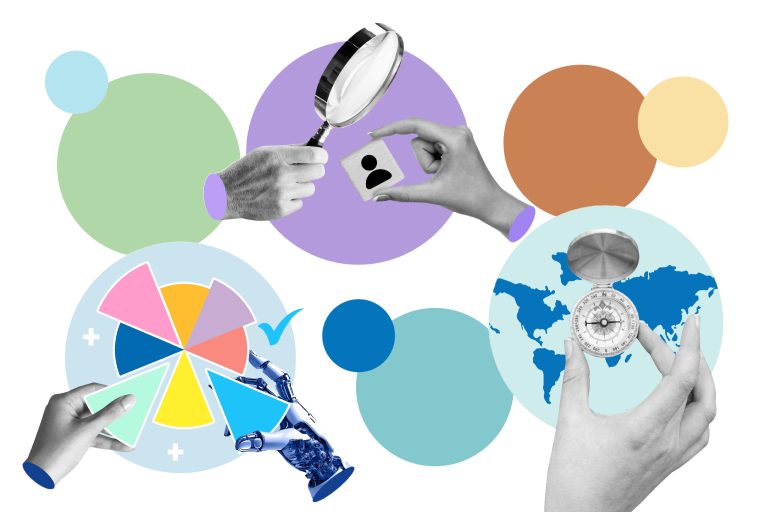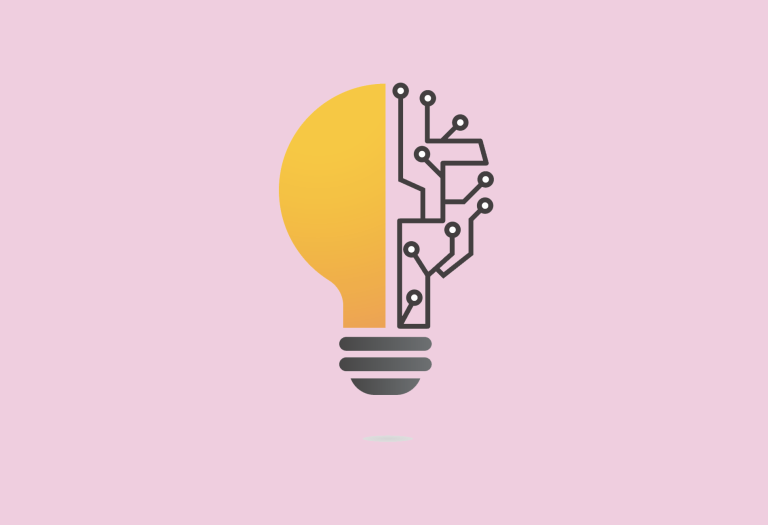From how we meet potential partners and use language to how we soothe newborns and get movie recommendations, artificial intelligence (AI) permeates every corner of life.
In the corporate world, it is bringing about major changes to how some of the world’s biggest companies conduct their business and shape their plans for the future. “I think 2018 is the year of AI everywhere, and for Microsoft, that’s the case,” said Brad Smith, President of technology giant Microsoft, at the RISE technology conference, which took place at the Hong Kong Convention and Exhibition Centre last month. “We are creating what are basically AI-fuelled apps.”
AI is many things, according to Smith. “A lot of what it comes down to is the ability of computers to understand the world, and to perceive the world the way people do.” Microsoft Asia has 3,000 engineers working in Beijing who are mainly concerned with creating parity between computers and humans in several fields. The company has seen major advances in areas including language, facial and emotion recognition. One of its most successful apps is Microsoft Translator, an app that can translate between 62 languages.
An AI’s success rate is based on measuring the error rate, Smith said. Microsoft software has now reached an accuracy rate of 96 percent in image recognition, and 94.6 percent in understanding human speech. “But the last 10 percent is always the hardest,” he added.
“I think 2018 is the year of AI everywhere, and for Microsoft, that’s the case.”
Microsoft has found that language comprehension is more complex than it appears. “We start with the premise that as human beings, we understand everything that’s said – we have 100 percent comprehension,” says Smith. “Well, it actually turns out that we comprehend about 96 percent of what’s being said, but our brains fill in the rest.”
Andy Chun, Associate Professor at City University of Hong Kong and Convenor of the Hong Kong Computer Society’s AI Specialist Group, agrees that the remaining 4 percent deficit is a barrier that AI has yet to surpass. “Four percent is often the ‘common sense’ – knowledge that all humans have but AI doesn’t, at least not yet,” he says. “Another part of the 4 percent is knowledge that is implicit or implied. In order for AI to fully understand, it must achieve some degree of ‘general intelligence’ or ‘general AI.’ This is a challenge that is still beyond current AI research.”
When Hollywood does AI
In the entertainment world, robots have been working for years behind the scenes, in many cases not obvious by the viewing public. Daniel Seah, Chief Executive Officer of Digital Domain, a California-based visual effects and digital production company that has created visual effects for films including Titanic and Pirates of the Caribbean, says visual effects are well known in movies such as Avengers: Infinity War, with virtual humans playing roles. But virtual humans also play less recognizable parts, such as in The Curious Case of Benjamin Button, a film starring Brad Pitt as a man who ages in reverse, starting life as an old man who progressively becomes younger as the years go by.
“Brad Pitt only participates less than 20 percent, when he plays himself as his real age. The rest is completely a virtual human,” said Seah at the conference.
“Brad Pitt only participates less than 20 percent when he plays. The rest is completely a virtual human.”
According to industry media reports, in the latest Avengers film, the company used an AI algorithm trained on high-resolution scans of actor Josh Brolin’s face to track his expressions down to individual wrinkles, then used another algorithm to automatically map the resulting face renders onto the body of the character Thanos, before animators went in to make some finishing touches. “We scan them and we use a body double. It means that a lot of actors and actresses can be replaced. It’s happening already.”
Much of AI so far has focused on responding to or copying human actions and Seah sees the digital entertainment world now moving onto prediction. “It’s interesting to know how human emotion affects a face,” he said. “We have a database of about 40,000 facial expressions, and we are beginning to predict facial expressions based on the emotions.”
The future of love
Sean Rad, Founder of online dating app Tinder, spotted a gap in the market when he looked at online dating options in the days before Tinder, which was launched in 2012. Early dating sites were designed for people who had no time to date, or who lived in rural areas. “They were essentially databases, and they failed to recognize a basic human dilemma,” said Rad at RISE, referring to the fear of being rejected. By eliminating the element of rejection, Rad was able to attract users. He developed what became known as swiping right or left – swipe to the right on the app to like someone, or left to move on to the next profile.
Rad is envisaging the future Tinder experience. “In five years, instead of me swiping on Tinder, I may talk to my phone, and my phone might describe a potential partner to me and suggest a date. That introduction might be created by some sort of AI,” he said. “The reality is that as technology gets better, it brings us closer together, not further apart.”
He added how AI can help people connect in new and more efficient ways in the real world. For example, AI could help to filter email messages and then act to interrupt us, if required. “If I’m having lunch with my mum, maybe that email from work isn’t a priority right now,” he explains, while “maybe something from my fiancée is relevant.”
Talking on the effects of the Internet on businesses, Rad said: “You need to think of yourself as global from day one.” At the same time, companies need to be able to adapt their business model to meet local conditions and expectations, he added. “You can’t assume that one thing works everywhere,” says Rad. “For us, it wasn’t enough to just localize the app in different languages. We really needed to understand what made every country unique. There are universal things that make us human, but there are different cultural impacts. In the first three months, we had teams in every country, giving us feedback.” The feedback was then used to make changes to the app based on local preferences, and improve its performance both globally and in specific markets.
Ethical concerns
Smith at Microsoft said that key questions will arise around ethics. “The future will be what we make it. One of the most important questions is not what computers can do, but what computers should do. We’re going to need a new type of conversation when it comes to AI and ethics, and a new generation of laws.”
He said six ethical principles are under discussion at Microsoft – fairness, safety, reliability, privacy, security and inclusivity. By reducing bias, the company is able to promote fairness, especially in how machines identify people through facial recognition. The technology, however, has proven less accurate in identifying women than men, and in picking out dark complexions compared to lighter ones, a deficiency Smith says has occurred because of a lack of a sufficiently diverse data set.
“If we’re not careful, we will build machines that have precisely the types of biases we’ve worked so hard to reduce,” Smith said. “This has therefore become one of the great challenges in computer science. You see it in the area of facial recognition perhaps above all else right now.” Ensuring transparency and accountability is also essential, he said. The enormous amounts of personal data being collected online, and its vulnerability to theft and abuse has made the public wary about the uses of AI.
Smith believes the correct response is to show that technology can and should be used in positive ways that help people (see Using AI for good sidebar). “We have to show the world that we’re not just using these technologies to benefit ourselves and grow our businesses,” he said. “We have to show the world that we have the capability to use this to help solve some of the world’s most pressing problems.”
Robots and jobs
While much of the debate around AI has focused on how many jobs could be lost to robots or automation, Smith offers hope. “AI will replace some jobs, and it’s going to create some new jobs. One way you can predict what’s going to be replaced is to look at what AI does well: if that’s what you do, your job might be at risk.” For example, AI understands speech very well, so jobs such as taking orders in fast food restaurants are at risk, while teachers, therapists and nurses may be impossible to replace.
One trend that he clearly sees is the increasing digitalization of jobs. “Over the last 15 years, more tasks in more jobs have required digital skills,” he said, noting that digital jobs also pay more. “We have to equip people with these skills.”
“One way you can predict what’s going to be replaced [by AI] is to look at what AI does well: if that’s what you do, your job might be at risk.”
While many jobs can be enhanced through AI, not all tasks can be replaced by it. Seah at Digital Domain points to the labour intensive hospitality industry, which has many roles that could seem ripe for replacement by robots or virtual humans. But it’s not so easy, he says, who believes that only apps with strong human characteristics are acceptable to the public in the hospitality industry, because an element of trust in the person serving you is essential. That would rule out, for example, cartoons and animated figures, but there are other possibilities. “Think if Siri had a face – if it could be someone that you love, your daughter, or your partner, someone you trust,” said Seah. “There are so many businesses that rely on high labour costs. If we can have celebrities – Brad Pitt for example – respond to us in call centres, that could be fantastic.”
Professor Chun says the potential impact of AI in accounting covers all aspects of accounting work. “For example, in client-facing situations, AI chatbots can help answer questions on the accounting practices or details of transactions. Using natural language processing and cognitive computing, AI can process and understand all current accounting laws and regulations, and then apply them to determine compliance, for example.” AI deep-learning can be used to recognize irregularities and identify potential frauds, he adds.
“In the movie The Accountant, the main character had a form of autism that allows him to study and remember millions of numbers, as well as correlate and identify patterns among the numbers. In the movie, he reads and remembers millions of numbers in years of accounting books for a major corporation to identify how someone was embezzling the company through a series of elaborate transactions across several subsidiaries. This is what AI can do for accounting.”
Digital vs. traditional companies
Hong Kong’s former financial secretary John Tsang now chairs Benefit Vantage Limited, a company that specializes in providing companies with web and mobile-based cybersecurity and data protection services. “We have a one-click, log-on solution – this is something we think is going to change the world.” said Tsang at the conference. “I’ve always said you’re never too young or old to be an entrepreneur. Entrepreneurship must have a purpose and my purpose is to change the world.”
From his career in government, Tsang believes that the government has an important role to play in pushing Hong Kong’s transition to becoming a technological society, but cautioned that it was in the nature of the government to move slowly. “Government bureaucracy is so huge that you need to give it time to change, and it will change,” he said. “I do encourage people in government now to have more courage and a better vision and to move ahead.”
He believes Hong Kong’s success in a tech-driven world depends on how it educates its young people. “Education is key to everything. We need to revamp our entire curriculum system in our schools, in order to have a more distributed type of education system – an education system that [teaches you different things at] different stages of life.”
Some companies are starting to adopt technology to upgrade their existing non-technology based work systems. Esquel Group, a Hong Kong-based textile manufacturing company, has been waking up to the need to integrate innovative technology into their workplaces. “We need to use information to create value,” said Chairman Marjorie Yang, also at the conference, who is leading the company towards a new digital path.
Yang said that companies in sunset industries like hers need to embrace technology to reinvent themselves and avoid becoming unattractive to employees. She also sees a need to push parents to encourage their children to learn new technologies. “Hong Kong is going to build an economy based on innovation, but we’ve got to have the manpower to fuel the innovation, so we are working with teachers and parents,” Yang said.
Yang believes that there is room in the business world for both traditional companies that are also digital companies. She sees an opportunity to use technology to empower and motivate her workforce of more than 50,000 people.
Starting with women aged about 45 with no experience or education in technology, Esquel has started to teach the workforce to build apps. She said mothers love the opportunity to go back to their kids and say, “I’ve built an app!”
“We teach our staff to build apps so now they feel they can master technology, rather than feeling that are going to be lunch for technology,” she said. “So now we have an opportunity to become a digital company.”
Using AI for good
New parents suffering sleepless nights and the lack of mobility among the elderly are some of the real-life problems that are being alleviated through the use of AI.
Superflex powered clothing was created by designer Yves Béhar’s Fuseproject company and robotics company Superflex to help improve the mobility of the over 65s who find it difficult to perform everyday tasks such as getting out of bed or loading the dishwasher.
“Our design is power clothing that feels like a second layer of skin that can sit inside your regular clothing, with fibre muscles and sensors lying on top of your real muscles to boost your mobility from the age of 70 to the age of 25. Most importantly, it helps you to continue exercising your muscles,” explains Fuseproject’s Vice President of Design Qin Li.
The lightweight clothing is made with motors, sensors and AI embedded into its fibres that sense and react to the body’s own movements. The clothing runs on batteries and the fibre muscles move along with the real muscles to make the experience feel natural.
Fuseproject also worked with start-up company Happiest Baby to develop Snoo, a smart baby crib that helps parents address sleep deprivation by soothing babies back to sleep. A baby who wakes up crying is gently rocked back to sleep within seconds with no parental intervention required, thanks to hidden AI-driven sensors and motors located underneath the bassinet. By detecting the sound and the movement of the baby, the bassinet automatically reacts to provide the movement and the white noise to soothe the baby back to sleep.
Microsoft’s “Seeing AI” app for the visually impaired was released a year ago and has been used more than four million times. It can verbally describe what’s happening in the phone camera’s immediate vicinity and read out emails, document contents and instructions on backs of food cans. “The truth is, AI is absolutely a game-changer for people with disabilities,” said Microsoft’s Brad Smith. “In the next 10 years, these technologies will take us very close to curing cancer.”






